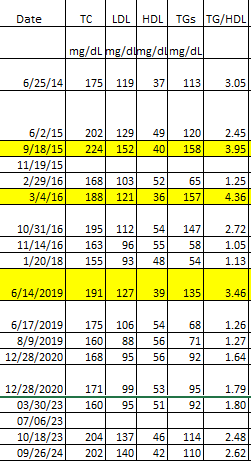Hi Harriet.
Please note that my recommendation was conditional:“Also, if you are not supplementing or getting sunlight, probably supp about 250 mcg or 10,000 IUs of vitamin D daily.” In this event 10,000 IUs is not a freakishly large dose - it is quite middlin. The USRDA of 1000 IUs is freakishly low or deficiency range UNLESS you are getting daily sufficient sunlight OR are eating it in your diet, which most people are not, including myself. I have no problem with recommending a person get blood tested. I did. And guess what? By Thanksgiving time in the north I was 1 point away from deficient. The vast majority of people in the United States are running around in the winter time being vitamin D deficient. The vast majority of people in the US who died from COVID were vitamin D deficient. The 1,000 IU USRDA will not change that. I thought as you do too, so I started with 5000 IUs in the winter after Thanksgiving, and was STILL 1 point away from deficiency after a month. So, I went to 10,000 IUs, which finally brought me up to 60 - midline average… The average white person can make 10,000 IUs of vitamin D in less than an hour of full sun with no more than 1/3 bodily skin exposure. I tested, and found that is what it takes for me in the winter. I have not been supplementing at all in the summer, because I wear shorts/short sleeves, and get plenty of sun, but for 5 months of the year, I do not. So I supplement… and 10,000 iu daily of vitamin D is NOT a freaking enormously large dose. It is barely sufficient. That is on top of multivitamin with a little, and daily 1 gr cod liver oil. As for melting my bones away… nope. I actually gained 0.2 lb of bone this last winter according to my smart scale. Thanks for your concern though.
I had a stroke last Friday
I ended up needing a wheelchair to get around because I was taking 5,000 ius and I WAS BEING MONITORED. It was the elevated calcium that clued me in, NOT my D levels, which were within normal range. This woman has a history of stroke.
You’re dangerously casual about your recommendations. Just because you’ve had success with something doesn’t mean it will go the same for another.
Sorry for your experience, but I would say you are an outlier. I’m glad you figured it out. As you pointed out, being monitored does not guarantee an optimal experience. Everyone is different. Still, on the average most people are vitamin D deficient. I am active, so probably use more vitamin D than most. Most doctors are just going to go by the blood serum vitamin D levels, unless symptoms clue them into something else. Since the average white person is going to make 10,000 IUs of vitamin D or more with a daily dose of sunlight, it is a reasonable placet to start. I followed up with blood tests, and I suggest others do too. And I stand by that. Cheers.
There are 2 striking things in your numbers to me:
- The drop of your CAC score from 310 to 92. I have never heard of such a drop. I am very interested in the score the next time you get a CAC scan.
- The drop of your HDL from 80 to 56. That does not look good to me, and I would be looking for a reason why this happened.
Cheers
Alec
I have also had a drop in my HDL, though mine went from the mid 50s to the 40s. Not sure why. And my LDL went up. Those things are highly variable, though. But I’m still trying to figure out about the HDL. I did switch a medication, which might be the cause of the HDL decrease. Of course, that’s not going to be written anywhere for a medication.
I would suspect lab error. I think they happen more often than we know and so the logical thing to do would be to have it repeated.
Unfortunately, HDL seems to be getting lower:

The highlighted were after fasting 4.5 days. At one time, trigs and HDL were about the same. Quite a bit different now.
Extreme over-supplementation of Vitamin D can result in toxicity, but it’s easily monitored through a blood test for serum D-25.
Although 10,000 IU/daily is approaching the upper recommended limit, I doubt that 10,000 IU would likely cause toxic serum levels, especially if D-25 remains under 150 ng/ml.
Hollick has researched and written extensively about this.
This snippet might be of interest:
Suggested tolerable upper intake level
Based on risk assessment, a safe upper intake level of 250 μg (10,000 IU) per day in healthy adults has been suggested by non-government authors. Blood levels of 25-hydroxyvitamin D necessary to cause adverse effects in adults are thought to be greater than about 150 ng/mL, leading the Endocrine Society to suggest an upper limit for safety of 100 ng/mL.
Source:
Bob,
Did you track any changes in exercise during this time interval? I ‘thought’ HDL was mostly increased with exercise?
I don’t have a data source , but I thought it was said saturated fat (eating more) also increased HDL. I wish I knew where I heard that.
